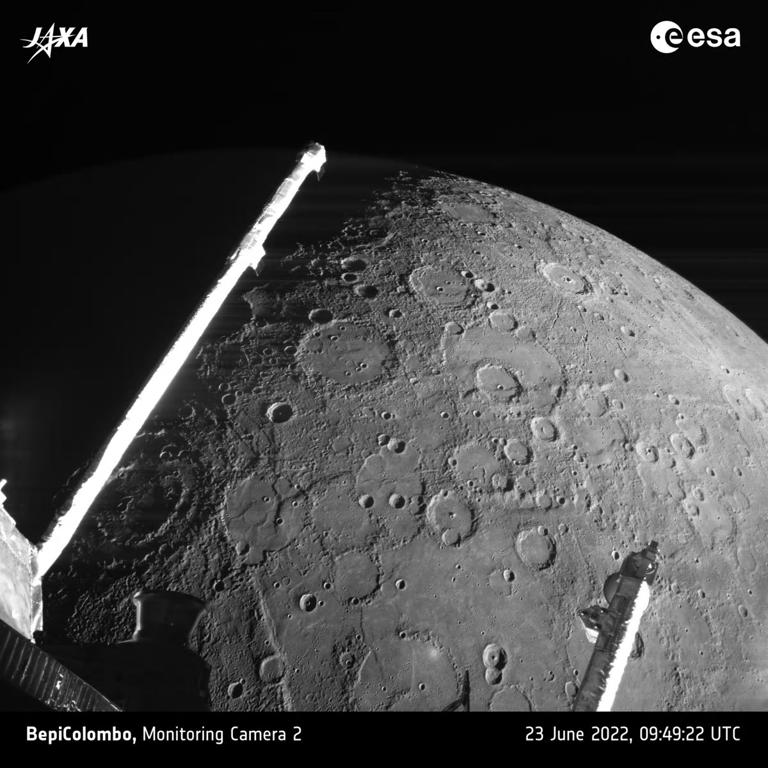
A joint Japanese-European space project called BepiColombo has released new images of Mercury during its second flyby of the planet, which came as near as 200 kilometres above the surface. Using its three monitoring cameras (MCAM), the spaceship shot the strange world of the planet .
Around five minutes after close approach and at a distance of around 800 kilometres, the first photograph of Mercury with illumination was captured. After the near encounter, pictures were shot for roughly 40 minutes while the spacecraft continued to move away from the planet. The landscape drastically altered when the spaceship moved from the night side to the day side.
The cratered globe came into view as the Sun rose, creating shadows along the terminator, the line between night and day, and dramatically emphasising the structure of the terrain.
The 1550 km-wide Caloris basin, Mercury’s greatest impact feature, came into view for the first time just a few minutes after the closest approach and with the sun beaming from above. Its highly shiny lavas on its bottom made it stand out against the darker background. BepiColombo’s main objective is to measure and comprehend the compositional variations between the volcanic lava in and around Caloris, which is believed to have formed around 100 million years after the creation of the basin itself.
‘I punched the air when the first images came down, and I only got more and more excited after that. The images show beautiful details of Mercury, including one of my favorite craters, Heaney, for which I suggested the name a few years ago’, Jack Wright, a member of the MCAM team said in a statement.

The spacecraft will make four more flybys of the planet before slowing down and gradually reducing its orbit so that it may enter the planet’s orbit in 2025.
Even though BepiColombo is currently configured for a ‘stacked’ cruise, which prevents many instruments from being fully operated during the quick flybys, they can still gather information about the magnetic, plasma, and particle environment around the spacecraft from places that aren’t typically accessible during an orbital mission.

Post Your Comments